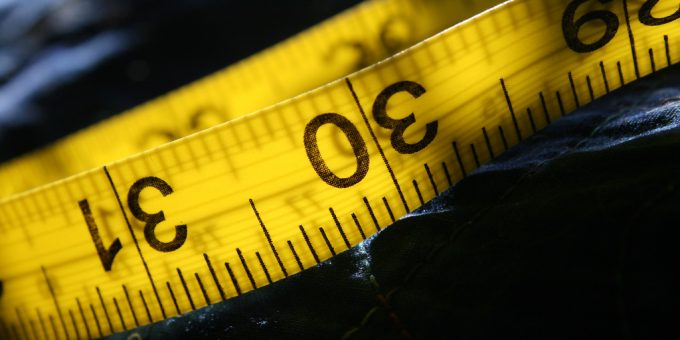
Inconsistent clothing sizes reinforce the perception that some sizes are "better" than others. Quinn Dombrowski.
That’s Not My Size
If you’re a woman, at some point you’ve probably wondered why your clothing size is completely different from brand to brand. Katelynn Bishop, Kjerstin Gruys, and Maddie Evans investigate this common experience via ethnographic observation, focus groups, and interviews with women and clothing retailers. Their article in Gender & Society is one of the first to specifically examine clothing size as a contributor to female identities, and it shows that inconsistent sizing standards contribute to the development of both positive and negative self-concepts.
After meeting at a conference and seeing similar themes in individual research interests, the authors combined their three studies to examine the consequences of clothing sizes. Bishop, Gruys, and Evans examined bra sizes, plus-size clothing, and bridal wear, respectively. Collectively, they found that women were likely to make efforts to maintain or alter their physique in order to fit sizes that matched what they considered “normal.” In some cases, women simply refused to buy items in sizes bigger than what they felt they should wear, even when recognizing that the larger sizes were a better fit. But “normal” wasn’t the same across all women: standards of size and shape varied across race and class lines. Black and Latina women in particular displayed more acceptance of larger sizes without engaging in self-stigmatization.
Bishop, Gruys, and Evans conceptualize clothing sizes as meaningful yet unstable “floating signifiers” of identity and status. Some women are able to distance themselves from stigmatized size categories by claiming particular clothing sizes and standards. Others are not. This leads to inequalities across women in psychological, social, and material benefits associated with standards of physical beauty and size. The authors conclude that because there are inconsistent standards of clothing size, some women are able to construct positive identities and body image by aligning themselves with more positive sets of standards. However, these inconsistent standards and the way they are used by women as a tool in forming identity are still problematic because they uphold a hierarchy of attractiveness that perpetuates gender oppression through hegemonic standards of beauty.
